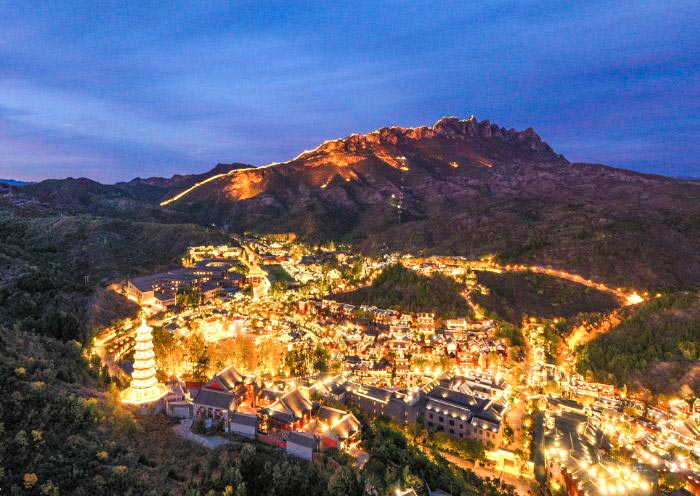Historical Significance and Cultural Impact
1.Who was the first to build the Great Wall of China?
The first parts of the Great Wall were built as early as the 7th century BC by various ancient Chinese states for defense. However, the most famous sections were constructed by the first Emperor of China, Qin Shi Huang, in the 3rd century BC to protect his newly unified country from northern invasions.
2.How old is the Great Wall of China?
Historians usually consider the defensive walls built during the Spring and Autumn period (770–476 BCE) and the Warring States period (475–221 BCE) to be the first sections of what would eventually become the structure known as the Great Wall of China, putting the wall at almost 3,000 years old.
3.Why was the Great Wall of China built?
The primary reason the Great Wall was built was for military defense. It was designed to serve as a formidable barrier against invasions, particularly from the nomadic tribes to the north. Over time, it also played roles in border controls, regulating trade along the Silk Road, immigration and emigration, and transportation.
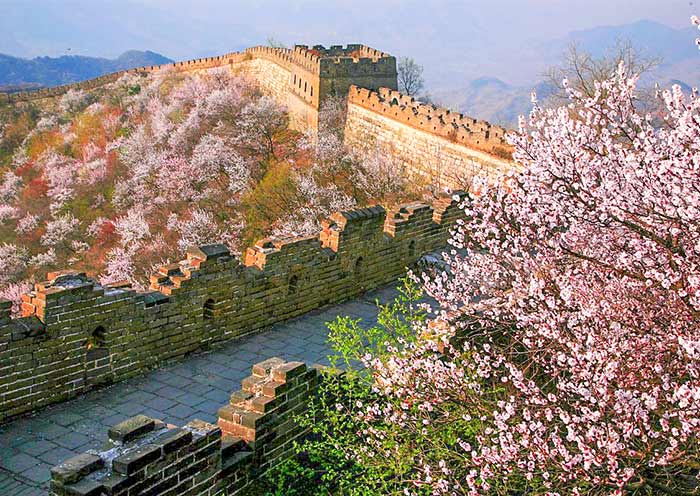
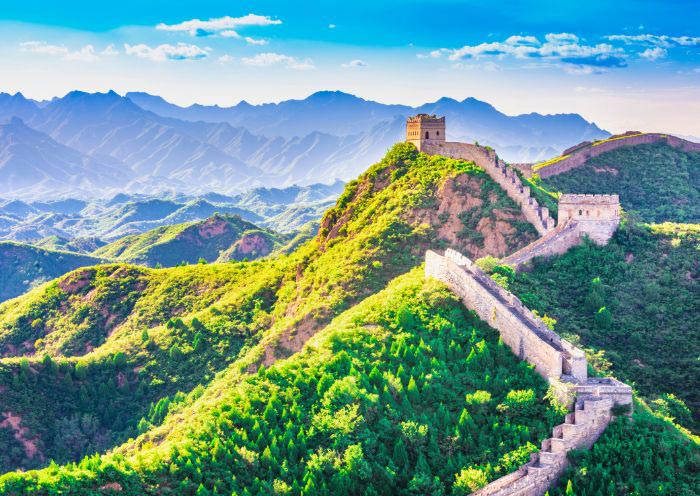
4.What role did the Great Wall play in protecting the Silk Road?
Beyond a military bulwark, the Wall served as a protective shield for the Silk Road, an ancient network of trade routes that connected China to the West. Part of the Great Wall coincided with Silk Road, it provided a line of defense against potential threats to traders and allowed for the regulation of trade. It thus facilitated the exchange of goods, ideas, and cultures, contributing to the prosperity of ancient China.
5.How has the Great Wall of China influenced Chinese culture and history?
The Great Wall has greatly influenced Chinese culture and history. It has served as a symbol of the nation's strength and perseverance. It has influenced art, literature, and folklore, becoming ingrained in the national consciousness. It also had a significant impact on the socio-political landscape of China, influencing military strategy, trade, and relations with other cultures.
6.How was the Great Wall of China used in warfare?
The Great Wall played a significant role in China's military strategy. It acted as a defensive stronghold, a transportation corridor, and a communication line (with the use of smoke signals and fire beacons). However, it's worth noting that major battles rarely occurred at the wall due to the cost-effectiveness of defending such a vast structure.


2 Days Beijing Great Wall Day & Night Tour to Mutianyu & Simatai
2 Days Wild Beijing Great Wall Hiking Tour: Gubeikou, Jinshanling, Simatai West
3 Days In-depth Beijing Great Wall Hiking Tour: Jiankou to Mutianyu to Gubeikou-Jianshanling-Simatai
4 Days Beijing Tour: City Highlights, Great Wall Night Views & Gubei Water Tour
Engineering Marvels and Construction Techniques
7.How long is the Great Wall of China?
The official length of the Great Wall of China, as recorded by China's State Administration of Cultural Heritage, is approximately 21,196.18 kilometers (13,170.7 miles). The Great Wall stretches across 15 provinces, autonomous regions, and municipalities in northern China, extending from the Bohai Sea in the east to the Gobi Desert in the west, spanning thousands of miles.
8.What is the typical height of the Great Wall of China?
The typical height of the Great Wall is around 5–8 meters (16–26 feet), equivalent to about three to five times the height of an adult.
9.What materials were used in the construction of the Great Wall?
The materials used in the construction of the Great Wall varied according to the period and location of the building. These materials included tamped earth, wood, stone, and bricks, with bricks becoming more predominant during the Ming Dynasty. Interestingly, a mortar made from glutinous rice flour was also used in some sections.
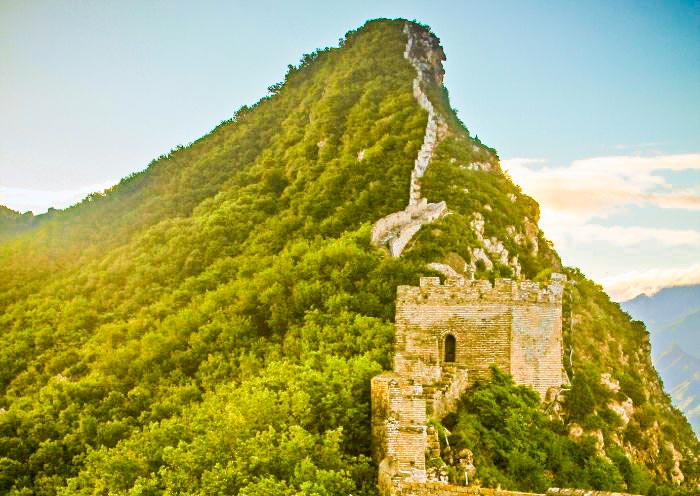

10.What types of structural elements are found in the Great Wall?
The Great Wall of China is more than just an isolated wall; it is a complete defense engineering system composed of various defensive constructions. The structural elements of the Great Wall include the main wall, watchtowers, fortresses, beacon towers, barracks, and passes. These components together enhance the wall's defensive capabilities, making it a formidable structure for centuries.
11.Who were the labor force behind the construction of the Great Wall?
The Great Wall's construction workforce was diverse and included soldiers, forcibly-recruited peasants, convicted criminals, and prisoners of war. Some sections were even built by local people as part of a communal obligation to the state.
12.Is the Great Wall of China a continuous line?
No, the Great Wall of China is not a continuous line. The Wall includes main walls, side walls, and branch walls. Additionally, high mountains or rivers often served as natural barriers where walls were not constructed.
13. Why were some bricks carved with characters on the wall?
The "Character Bricks" or "Wen Zi Zhuan" are a remarkable feature of the Great Wall, left by the builders as a mark of their work. They bear inscriptions that denote various details such as the production site of the brick, the quantity, and the name of the official in charge. This practice was believed to be initiated by General Qi Jiguang to ensure the quality of the bricks used. If any quality issue were to arise with the bricks, the inscriptions would allow the concerned authorities to directly trace back to the responsible parties. Note: Writing on the Great Wall is not allowed now.
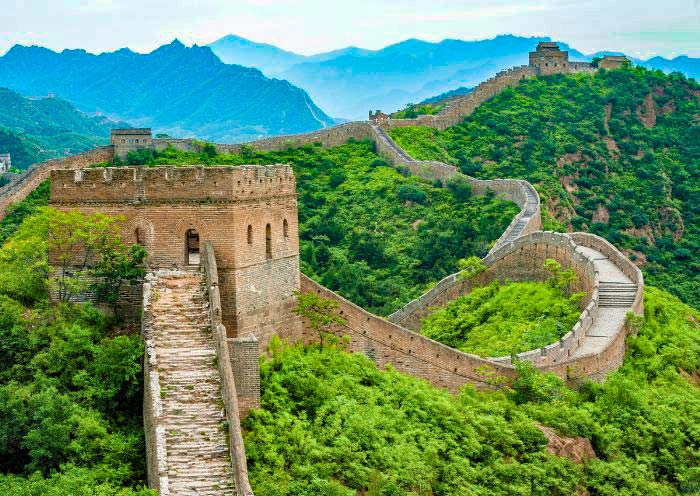
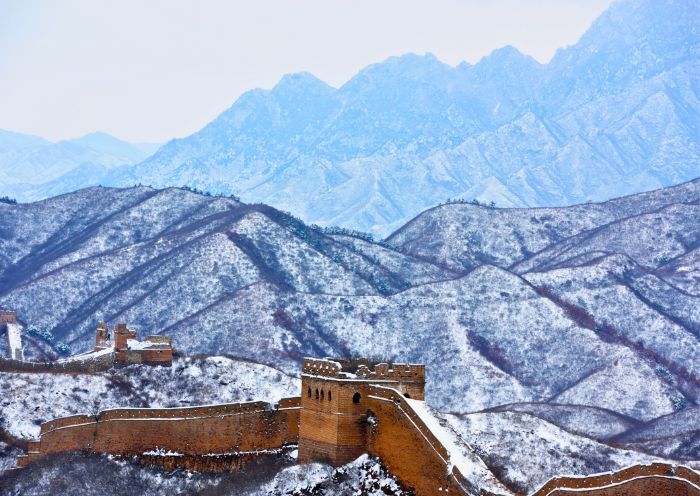
2 Days Beijing Great Wall Day & Night Tour to Mutianyu & Simatai
2 Days Wild Beijing Great Wall Hiking Tour: Gubeikou, Jinshanling, Simatai West
3 Days In-depth Beijing Great Wall Hiking Tour: Jiankou to Mutianyu to Gubeikou-Jianshanling-Simatai
4 Days Beijing Tour: City Highlights, Great Wall Night Views & Gubei Water Tour
Interesting and Lesser-known Facts
14.Can you see the Great Wall of China from space?
Contrary to popular belief, the Great Wall of China cannot be seen from space with the naked eye. It is a myth propagated by an old tale.
15.Are there any other defensive walls like the Great Wall built by other nations?
The Han people were not the only nation to build a Great Wall. The northern nomads also built their own walls for defense.
16.What is the story of Meng Jiangnv and its association with the Great Wall?
The tale of Meng Jiangnv is a popular legend in China. It tells of a woman whose husband was conscripted for work on the Great Wall during the Qin Dynasty. When he died due to harsh labor, Meng Jiangnv's bitter weeping caused a section of the Great Wall to collapse, revealing her husband's bones for her to bury. This story underscores the heavy human cost of the wall's construction.
17. Is it true that glutinous rice was used in the construction of the Wall?
Yes, that's true! During the Ming Dynasty, a type of mortar made from glutinous, or "sticky," rice was used in the construction of the Great Wall. This adhesive mixture, often called "sticky rice mortar," was made by mixing glutinous rice soup with slaked lime. The sticky rice lent the mixture a cohesiveness and resistance to water that was far superior to pure lime mortar.
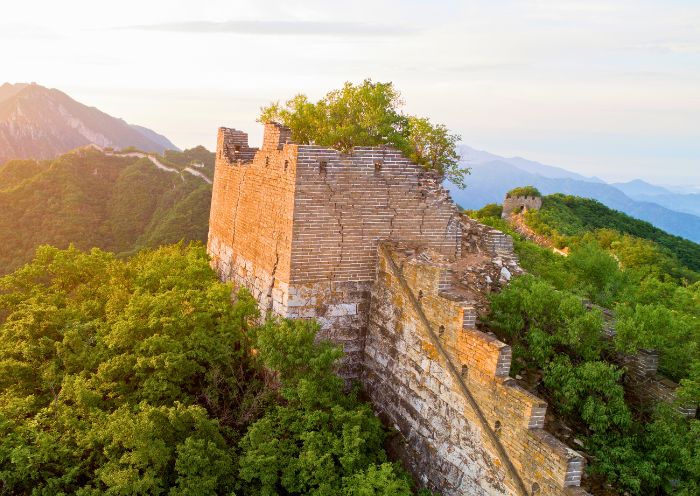

2 Days Beijing Great Wall Day & Night Tour to Mutianyu & Simatai
2 Days Wild Beijing Great Wall Hiking Tour: Gubeikou, Jinshanling, Simatai West
3 Days In-depth Beijing Great Wall Hiking Tour: Jiankou to Mutianyu to Gubeikou-Jianshanling-Simatai
4 Days Beijing Tour: City Highlights, Great Wall Night Views & Gubei Water Tour
Famous Great Wall Sections
20. Which is the most visited section of the Great Wall?
The Badaling section of the Great Wall is the most visited due to its proximity to the capital city, its magnificent vistas, and its comprehensive visitor facilities. This section was also the first to be opened to tourists in 1957. Moreover, it's significant because it's where many foreign leaders and dignitaries are taken to visit when they are in China.
For international travelers, the Mutianyu section is popular due to its less crowded conditions, well-preserved condition, and stunning views. It also features amenities such as cable cars and toboggan rides, which add to its appeal among tourists.
21.Why the Jiankou is the most challenging section?
The Jiankou section of the Great Wall is a wild wall, known for being steep and winding. Nestled among rugged mountains and lush vegetation, this unrestored section provides a raw and authentic Great Wall experience. Its steep, uneven paths and crumbling bricks present a real challenge, attracting adventurous hikers and photographers who seek the untouched beauty of the Wall and its surroundings.
22.What makes the Simatai section of the Great Wall a popular destination for night tours?
The Simatai section is the only part of the Great Wall that is open for night tours. Illuminated by lights, the Wall provides a mesmerizing view after sunset. The well-preserved Simatai retains the original appearance of the Ming Dynasty Wall and is known for its steepness, ruggedness, and variety of structures. The night view further amplifies the historical ambiance, making it a unique experience for visitors. Additionally, its proximity to Gubei Water Town - a traditional-style town - adds to the attraction for tourists, offering them a combination of heritage exploration and scenic beauty.
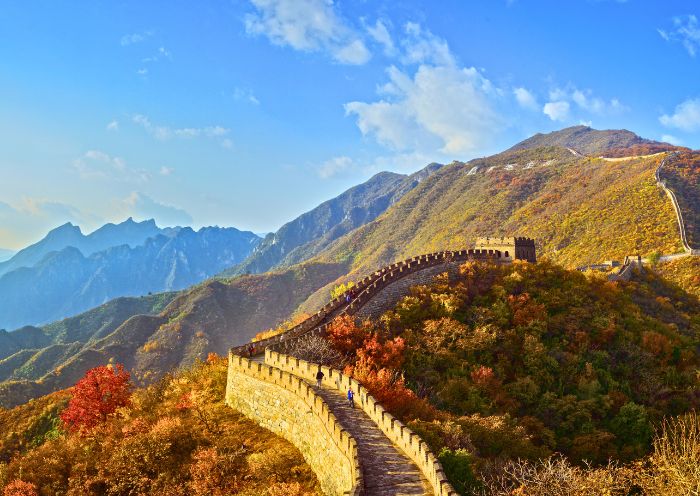
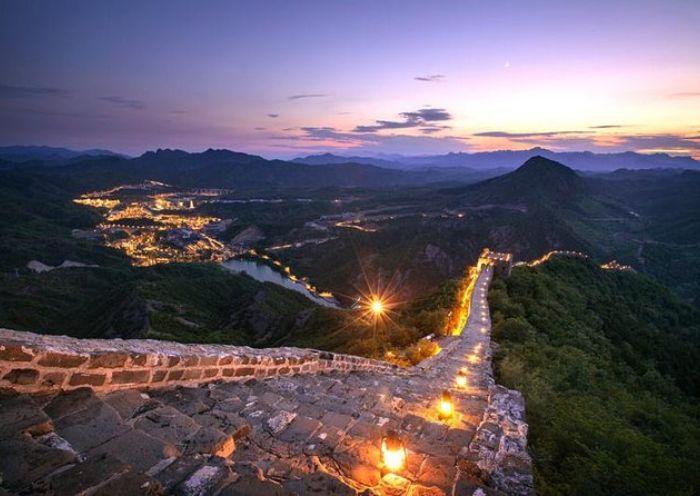
23. What is Huanghuacheng Great Wall famous for?
Huanghuacheng Water Great Wall is a less visited section that offers a unique view of the Great Wall partially submerged in a lake. The Huanghuacheng section got its name due to the fact that this portion of the Great Wall is surrounded by lakes and rivers, with about 1,300 meters lying beneath the water's surface, presenting a distinctive feature different from other sections of the Great Wall. Here, visitors get a chance to appreciate the merging of the Great Wall's majestic man-made military defense system with the beautiful and tranquil natural landscape.
24.What makes Shanhai Pass known as the "First Pass Under Heaven"?
Shanhai Pass, one of the most important passes of the Ming Dynasty Great Wall, was a critical juncture for the route to the capital city and a vital gateway from North China to the Northeast. Praised by ancients as the key to the two capitals and "the First Pass of the Great Wall", it was built in 1381 by Xu Da, a great general and prince of the Ming Dynasty. Its name, Shanhai Pass, originates from its geographical position - nestled between mountains (Shan) and the sea (Hai).
25.Why is Jiayuguan Pass referred to as the "Impregnable Pass Under Heaven"?
Jiayuguan Pass is known worldwide as the western start point of the Great Wall from the Ming Dynasty. The terrain here is extremely perilous. Among the hundreds of strongholds along the Great Wall, Jiayuguan Pass is one of the most intact. Its formidable defense system, along with the rugged natural landscape, earned it the title - "Impregnable Pass Under Heaven".
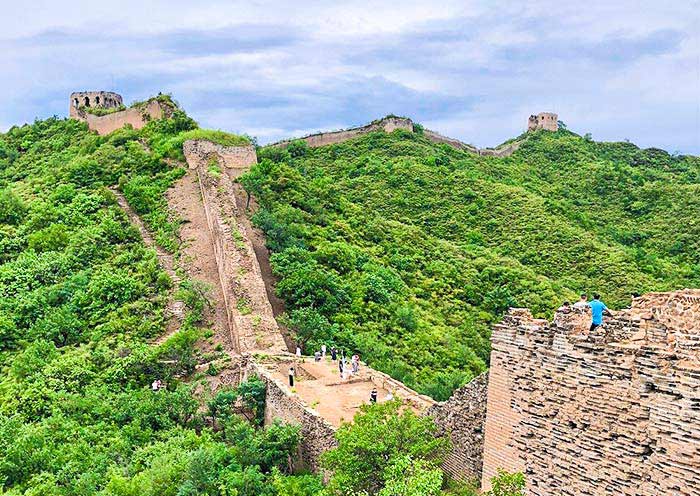
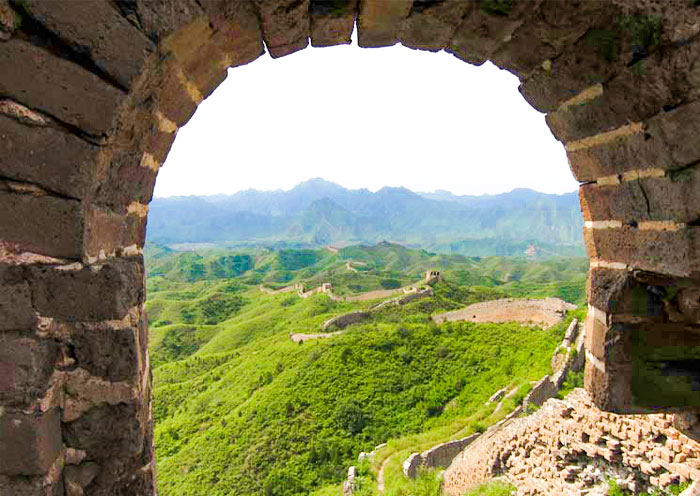
2 Days Beijing Great Wall Day & Night Tour to Mutianyu & Simatai
2 Days Wild Beijing Great Wall Hiking Tour: Gubeikou, Jinshanling, Simatai West
3 Days In-depth Beijing Great Wall Hiking Tour: Jiankou to Mutianyu to Gubeikou-Jianshanling-Simatai
4 Days Beijing Tour: City Highlights, Great Wall Night Views & Gubei Water Tour
Travel to the Great Wall of China with Asia Odyssey Travel (AOT)
Discover the majestic expanse of the Great Wall of China, a marvel of ancient engineering and one of the world's most famous landmarks, with Asia Odyssey Travel (AOT). Leveraging years of experience leading tours across the Great Wall of China, AOT is perfectly equipped to customize a journey that resonates with your unique travel aspirations.
Useful Great Wall Travel Guide:
Great Wall of China, Great Wall of China Facts, How to Get to the Great Wall of China
Mutianyu Great Wall, Simatai Great Wall
Jinshanling Great Wall, Jiankou Great Wall
Tour Packages: Beijing Great Wall Tours, China Great Wall Tours
Embark on a journey of discovery with Asia Odyssey Travel and experience the awe-inspiring presence of the Great Wall of China. Contact us today to begin planning your unforgettable adventure, and walk the path of history at one of humanity's most storied constructions.


